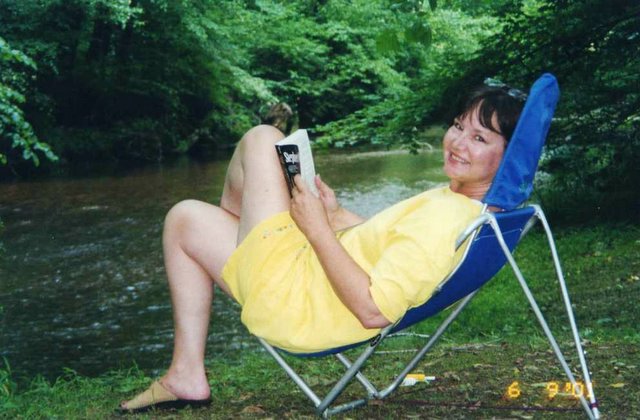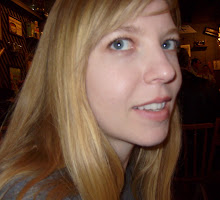Northport to New Orleans, Day Two
I guess if the truth be known, staying in French Camp was really better. The town consists of a couple of stores and a few other buildings with the most notable one being French Camp Academy, a Christian-oriented boarding school. The academy also owns the bed and breakfast and the local cafe. Lucky for me because Debbie, who runs the B&B, volunteers to go to the only restaurant in town -- now closed -- to get me dinner. A turkey sandwich on homemade bread, potato soup, broccoli salad, Mississippi Mud pie and a quart of sweet iced tea -- one of the best meals I ever had!
French Camp is a beautiful small town located at Milepost 180 on the Natchez Trace, 180 miles from the town of Natchez. The Trace runs from Natchez to just south of Nashville, Tennessee -- a total of 442 miles. If you don't enjoy the Natchez Trace you just don't have a sense of history.
At first the trace was a series of hunters' trails. By 1733 the French knew the land well enough to map an Indian trail running from Natchez to the northeast. By 1785 Ohio River Valley farmers searching for markets began floating their crops and products down the Mississippi River to Natchez and New Orleans. They would then sell their flatboats for lumber and return by walking the crude trail that soon became a clearly marked path.
After the steamboat was invented in 1812, however, the trace was no longer the preferred return route north. Now this two-lane paved highway with relatively low traffic is one of the best bicycle routes in the country. As I travel south on the trace, I contemplate the fact that my southerly route is not "historically" accurate.
I pack light for this kind of touring: the riding clothes on my back (with plans to wash them out each day), a change of clothes for non-biking, four tubes, one extra tire, very few toiletries, "butt" butter (a critical article), a bike multi-tool (that I can do very little with), CO2 cartridges, a backup pump, tire tools, a paperback book, gel packs, camera and film, my always-present Celebrex for my arthritic hip and, outside of the usual biking fare, some of Sherry's ashes to leave at our memorable locations.
It became apparent early on that Sherry didn’t share some of my hobbies. Her first (and last) backpacking trip with me was in February of 1978, some nine months before our marriage. She often referred to this excursion as "the death march." And I cannot yet understand why she didn't enjoy the millet I served her in the evenings for dinner. I think it was here in White Oak Hollow of the Sipsey Wilderness Area of Bankhead National Forest that our verbal pre-nuptial agreement was developed. "Either _________ (insert any of the following in the blank: backpack, hike, canoe, camp or bicycle) with me or let me do these on my own." More often than not these were done on my own.
Earlier in August I returned to White Oak Hollow with my brother. It was the first of many planned pilgrimages in which I would leave a bit of Sherry at some of "our" places.
On Day Two of the trek to New Orleans I leave French Camp late after a great B&B breakfast. I realized sometime on my first day that I had failed to transfer my bike-changing tools from my smaller pack prior to beginning my ride. I'm not much of a bike mechanic and really need these to make changes should I flat. Fortunately I had not had a problem. There will not be a bike shop until Jackson, Mississippi, and I want to avoid the big city riding if possible. Luckily, as I approach Kosciusko (birthplace of Oprah Wynfrey, by the way) I spot the first cyclist I have seen on the trip.
After engaging David Oaks in conversation and being pitiful and whining some we return to his car and he takes me to his home and gives me some tire tools to get me through. You can count on the good nature of others -- particularly other cyclists!I stay on the Trace throughout the day and arrive at the Mississippi Crafts Center on the edge of Jackson, where I exit. In three miles I find the least expensive motel I can after completing an 87-mile day. The Econ-Lodge provides the essentials, which includes a pool. I go to the convenience store to get a few items and hit the pool with my goodies.
The motel is an example of cultural diversity at its best. Around the pool is a group of African-Americans, a table of East Indians, an area of "good ole boys," a group of Hispanics and a lone Caucasian cyclist. But there was a commonality that pulled us all together. Each person had before him a cold Bud Lite. During my time there I would make eye contact with each, smile and raise my beer in mock toast -- beer, the universal language.
Lesson from Day Two: Buy more beer!
I guess if the truth be known, staying in French Camp was really better. The town consists of a couple of stores and a few other buildings with the most notable one being French Camp Academy, a Christian-oriented boarding school. The academy also owns the bed and breakfast and the local cafe. Lucky for me because Debbie, who runs the B&B, volunteers to go to the only restaurant in town -- now closed -- to get me dinner. A turkey sandwich on homemade bread, potato soup, broccoli salad, Mississippi Mud pie and a quart of sweet iced tea -- one of the best meals I ever had!
French Camp is a beautiful small town located at Milepost 180 on the Natchez Trace, 180 miles from the town of Natchez. The Trace runs from Natchez to just south of Nashville, Tennessee -- a total of 442 miles. If you don't enjoy the Natchez Trace you just don't have a sense of history.
At first the trace was a series of hunters' trails. By 1733 the French knew the land well enough to map an Indian trail running from Natchez to the northeast. By 1785 Ohio River Valley farmers searching for markets began floating their crops and products down the Mississippi River to Natchez and New Orleans. They would then sell their flatboats for lumber and return by walking the crude trail that soon became a clearly marked path.
After the steamboat was invented in 1812, however, the trace was no longer the preferred return route north. Now this two-lane paved highway with relatively low traffic is one of the best bicycle routes in the country. As I travel south on the trace, I contemplate the fact that my southerly route is not "historically" accurate.
I pack light for this kind of touring: the riding clothes on my back (with plans to wash them out each day), a change of clothes for non-biking, four tubes, one extra tire, very few toiletries, "butt" butter (a critical article), a bike multi-tool (that I can do very little with), CO2 cartridges, a backup pump, tire tools, a paperback book, gel packs, camera and film, my always-present Celebrex for my arthritic hip and, outside of the usual biking fare, some of Sherry's ashes to leave at our memorable locations.
It became apparent early on that Sherry didn’t share some of my hobbies. Her first (and last) backpacking trip with me was in February of 1978, some nine months before our marriage. She often referred to this excursion as "the death march." And I cannot yet understand why she didn't enjoy the millet I served her in the evenings for dinner. I think it was here in White Oak Hollow of the Sipsey Wilderness Area of Bankhead National Forest that our verbal pre-nuptial agreement was developed. "Either _________ (insert any of the following in the blank: backpack, hike, canoe, camp or bicycle) with me or let me do these on my own." More often than not these were done on my own.
Earlier in August I returned to White Oak Hollow with my brother. It was the first of many planned pilgrimages in which I would leave a bit of Sherry at some of "our" places.
On Day Two of the trek to New Orleans I leave French Camp late after a great B&B breakfast. I realized sometime on my first day that I had failed to transfer my bike-changing tools from my smaller pack prior to beginning my ride. I'm not much of a bike mechanic and really need these to make changes should I flat. Fortunately I had not had a problem. There will not be a bike shop until Jackson, Mississippi, and I want to avoid the big city riding if possible. Luckily, as I approach Kosciusko (birthplace of Oprah Wynfrey, by the way) I spot the first cyclist I have seen on the trip.
After engaging David Oaks in conversation and being pitiful and whining some we return to his car and he takes me to his home and gives me some tire tools to get me through. You can count on the good nature of others -- particularly other cyclists!I stay on the Trace throughout the day and arrive at the Mississippi Crafts Center on the edge of Jackson, where I exit. In three miles I find the least expensive motel I can after completing an 87-mile day. The Econ-Lodge provides the essentials, which includes a pool. I go to the convenience store to get a few items and hit the pool with my goodies.
The motel is an example of cultural diversity at its best. Around the pool is a group of African-Americans, a table of East Indians, an area of "good ole boys," a group of Hispanics and a lone Caucasian cyclist. But there was a commonality that pulled us all together. Each person had before him a cold Bud Lite. During my time there I would make eye contact with each, smile and raise my beer in mock toast -- beer, the universal language.
Lesson from Day Two: Buy more beer!



0 Comments:
Post a Comment
<< Home